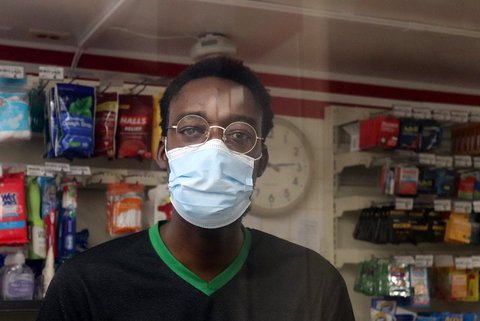
02 Feb Essential Workers, Others at High-Risk Push Back on State’s Age-Based Vaccine Rollout

California’s move to an age-based vaccine rollout has raised concerns among younger at-risk people, including essential workers who can’t stay home. (Photo by Elvert Barnes, licensed under CC BY-SA 2.0)
By Quinci LeGardye, California Black Media
COVID-19 vaccine distribution has been a complex puzzle for California’s state and local governments so far, with efforts to vaccinate as many people as possible coming up against a limited statewide supply, technology issues with appointments and protests from anti-vaxxers.
On Jan. 25, Gov. Gavin Newsom announced multiple actions aimed to improve the state’s vaccination rollout, including transitioning to a statewide network and launching a new scheduling and data system in early February.
Newsom also announced that, going forward, California will shift to a statewide age-based vaccine eligibility system. The state will continue through the current vaccination tier, which includes individuals age 65 and over, and healthcare workers. In mid-February, eligibility will expand statewide to include teachers, school staff, emergency services – as well as food and agriculture workers in mid-February. After those groups are vaccinated, the state will determine the next tier of vaccine eligibility based on age.
State officials say that the new simplified approach to vaccine distribution will ensure that more vaccines get administered to Californians vulnerable to COVID-19, as well as provide clarity in a vaccine rollout that has differed county by county.
“We realize we have got to increase throughout, and while we are proud of the framework we put out, we recognize that it has advantages and disadvantages as it relates to speed and efficiency,” Newsom said at the Jan. 25 announcement.
>>>Read: With Line Moving, Some Question Getting COVID-19 Vaccine
According to the state’s coronavirus website, California has received over 4.7 million vaccine doses and distributed over 3.4 million doses as of Jan. 31. At the Jan. 25 briefing, California Health and Human Services Secretary Dr. Mark Ghaly said about 125,000 people are receiving doses each day.
“At this moment of scarcity, we need to make sure the vaccine is not just used to get to herd immunity, but to ensure that our most vulnerable [are protected],” Ghaly said.
The announcement was met with concern from groups who have been advocating for earlier access to vaccines, including certain classes of essential workers and people with chronic medical conditions.
Under the new age-based system, it’s unclear where Californians younger than 65 with disabilities or underlying medical conditions will fall on the state’s priority list. The CDC categorizes adults of any age with certain conditions — including heart failure, chronic kidney disease, Type 2 diabetes, a body mass index over 30 — and smokers, among other vulnerable groups, at “increased risk “of severe illness from COVID-19.
Advocates have argued that people with severe disabilities should be prioritized according to the original vaccine rollout tiers. At a Jan. 29 press conference, Executive Director of Disability Rights California Andy Imparato said, “The governor has said he is committed to equity. We share his commitment, and we support vaccinating older Californians as a priority group, but the commitment to equity is meaningless if all of the high-risk people who aren’t over 65 have to wait until June to be vaccinated. So many people living with high-risk disabilities, including those who are also in marginalized communities, are going to die if the governor doesn’t reconsider.”
The switch to age-based distribution also means that younger essential workers were pushed further back in the line to receive the vaccine. The next group of industries scheduled to receive the vaccine before the change included transportation and logistics; critical manufacturing; and industrial, commercial, residential and sheltering facilities/services.
>>>Read: ‘Time Will Always Tell’: Doctor Addresses Coronavirus Vaccine Concerns
SEIU California President Bob Schoonover released a statement on Jan. 25 regarding the eligibility change.
“Millions of working Californians, most of them people of color, have no choice but to leave their homes and work each day, exposing themselves, their families, and their communities to COVID-19 and its devastation. Research shows that work is a major source of transmission. California labeled these workers essential when the state wanted their service through the pandemic; if they are removed from the priority list for vaccination, the state is now saying they are expendable,” says Schoonover.
The California Transit Association sent a letter to Newsom on Jan. 25 urging the governor to return to the previous tier system or prioritize transit frontline workers alongside healthcare, emergency services, food and education workers. In the letter Executive Director Michael Pimentel argues that public transit workers have provided critical services to essential workers and filled important gaps in emergency and social services.
“For many low-income people, disabled individuals, seniors, communities of color, and essential workers, accessing the vaccine will require a trip on a bus, rail car or paratransit vehicle. It would be unfortunate for the state to not ensure that those trips are as safe as possible for the rider and the transit frontline worker by ensuring transit frontline workers are vaccinated,” the letter reads.






No Comments